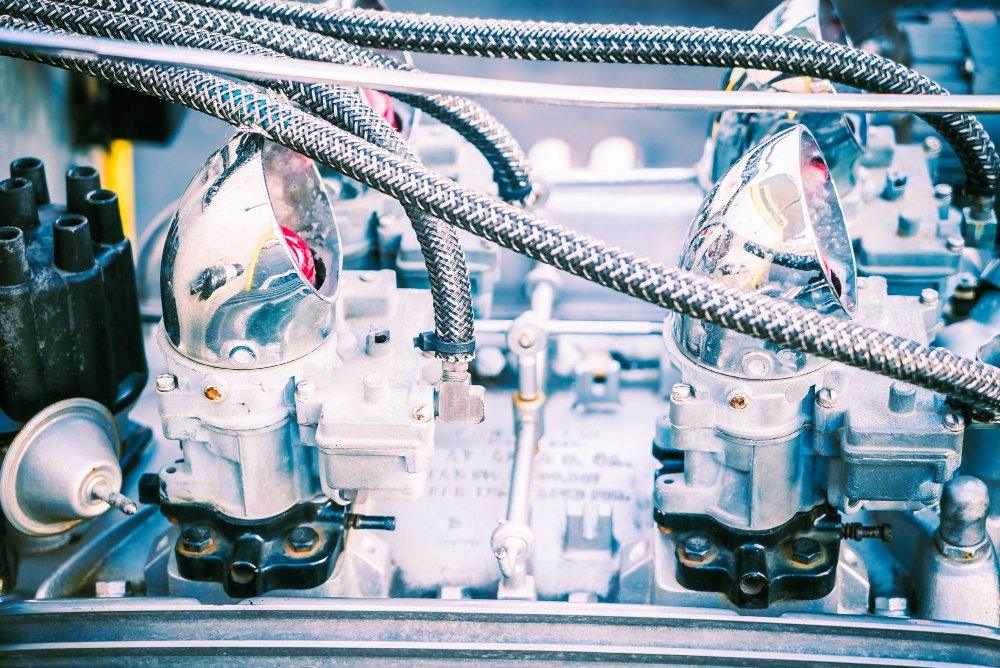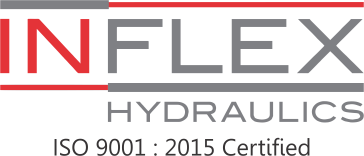In regard to the business of industrial automation, building, and heavy machine industry, the right choice regarding choice of a hydraulic type of directional control valve will be crucial towards a seamless operation, higher efficiency, and longevity of use. Inflex Hydraulics knows there is a way to save by using the right components to fit your needs. A proven supplier of high-quality hydraulic valves and solutions in 40 years of operation, we understand how to enable our clients to streamline their hydraulic systems with ease.
This guide explores everything you need to know about directional control valves, how to choose the right one, and why Inflex Hydraulics should be your trusted partner for all hydraulic control valves.
What Is a Hydraulic Directional Control Valve?
One of the pillars of a hydraulic system is that it is fitted with a hydraulic directional control valve. It controls the movement of the fluids that it lets the machines either stretch, shrink, lift, drop, or rotate. The valve only informs of the point through which the hydraulic fluid must flow in the system in order to regulate actuator movement and operation of the system.
Do you work with a press machine, forklift, big excavator, or something, without sufficient workability of hydraulic directional control valves, the efficiency and safety of the work system will suffer significantly.
Types of Hydraulic Valves
Before diving into selection, it’s helpful to understand the main categories of hydraulic valves:
- Directional Control Valves – These regulate the direction of fluid flow.
- Pressure Control Valves- This maintains the pressure within the system as desired to avoid overloading.
- Hydraulic Flow Control Valves – These control the speed of actuators by managing the flow rate.
Each of the types serve a separate role, but in most systems, the represented hydraulic directional control valve is in the centre of control element of movement.
Why the Right Valve Matters
Using the wrong type or size of hydraulic control valves can lead to:
- Reduced efficiency
- Pressure losses
- Overheating
- Fluid leakage
- Component failure
This is why it is important to decide which valve will work best regarding the rate of flow, pressure needs, and control requirements.
Considerable Factors When Selecting a Hydraulic Directional Control Valve.
1. Flow Rate Compatibility
The valve should be in a position to take up the flow in the system without creating any bottlenecks. Oversized or undersized hydraulic flow control valves can negatively affect system performance.
2. Operating Pressure
Make sure that the valve is adjusted to the pressure of your system. Inflex Hydraulics will provide valves with a large pressure scope to suit all applications.
3. Spool Configuration
Various types of spools permit dissimilar streams. An illustrative case is of closed-center spools where the pump is secluded when the valve is at the neutral position, whereas, in an open-center spool, the spool permits unrestricted flow.
4. Actuation Method
Choose manual, solenoid, hydraulic, or Pneumatic actuation, as per the automation and control needs you have.
5. Mounting Requirements
Beware that the valve is fitted to the mounting arrangement of your system—sub-plate, manifold, or in-line.
Common Applications of Directional Control Valves
Directional control valves are used in:
- Excavators and loaders
- Injection molding machines
- Agricultural equipment
- Industrial presses
- Material handling systems
The nature of flows, pressure, and directionality varies depending on each application, hence the necessity to have a professional partner such as Inflex Hydraulics.
Inflex Hydraulics: Your Partner for Premium Hydraulic Solutions
At Inflex Hydraulics, we specialize in high-performance hydraulic valves that cater to complex and demanding industrial systems. Our product range includes:
- Hydraulic directional control valves (manual, solenoid-operated, pilot-operated)
- Hydraulic flow control valves with adjustable settings
- Modular and custom hydraulic control valves designed for unique system requirements
What sets us apart?
- Decades of Industry Experience
We’ve been solving hydraulic challenges across sectors, from oil & gas to manufacturing. - Quality-Driven Supply Chain
Our products are rigorously tested to ensure optimal reliability and performance. - Customization and Support
Whether you need a single directional control valve or a fully customized hydraulic solution, we offer unmatched technical support and customization.
When to Replace or Upgrade Your Valve
You may need to replace your hydraulic directional control valve if:
- The valve leaks persistently
- Spool movement is stiff or stuck
- The actuator response is sluggish
- There’s a sudden pressure drop across the valve
Modifying old technology into modern, advanced model with accurate hydraulic flow control valves can also contribute towards improvement in energy saving, accuracy, and life cycle.
Trust Inflex Hydraulics for Hydraulic Valves That Perform
Selecting the correct hydraulic control valves is not only a matter of compatibility, but rather a matter of maximizing performance, and minimizing both maintenance and long term reliability. Our team at Inflex hydraulics has your back, as we assist you to pull the trigger and make an informed decision. We can help you choose and fit the right directional control valves, and all of the way as you develop your system.
Let us assist you in developing a smarter, safer, efficient hydraulic system.
Final Thoughts
The right valve is the first step to the efficiency of your hydraulic system. Whether you’re selecting your first hydraulic directional control valve or upgrading a legacy system, Inflex Hydraulics is your trusted partner for high-quality hydraulic valves that deliver performance under pressure.
Contact our professionals to locate the best hydraulic directional control valve on the market.



